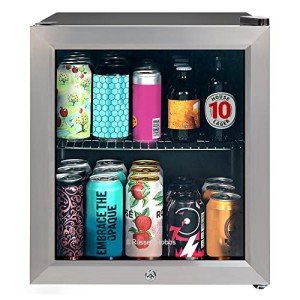15 Up-And-Coming Commercial Coolers Bloggers You Need To Be Keeping An Eye On
The Role and Evolution of Commercial Coolers in the Modern Marketplace
In the dynamic landscape of modern commerce, the function of commercial coolers can not be overemphasized. These necessary tools are the foundation of various markets, from supermarkets and convenience shops to dining establishments and health care facilities. This short article explores the significance of commercial coolers, their types, improvements, and the effect they have on business operations.
Introduction to Commercial Coolers
Commercial coolers, also referred to as commercial refrigerators, are designed to preserve a consistent and regulated temperature environment for the storage of perishable goods. Unlike home refrigerators, commercial coolers are built to withstand heavy use and are geared up with features that make sure dependability and efficiency in high-demand settings. They are vital for preserving the quality and safety of food, beverages, and other temperature-sensitive products.
Kinds Of Commercial Coolers
Cooled Display Cases
- Vertical Coolers: Commonly found in supermarkets and convenience stores, these units enable customers to see and choose items easily.
- Horizontal Coolers: Often used for showing beverages and small items, these systems can be either open or with glass doors.
Walk-in Coolers
- Walk-in Freezers: Large, room-sized systems developed for bulk storage of frozen goods.
- Walk-in Coolers: Similar to walk-in freezers however keep a greater temperature, appropriate for keeping dairy, produce, and other perishables.
Undercounter Coolers
- Bar Coolers: Compact systems designed to fit under bar counters, suitable for saving beverages and mixers.
- Preparation Coolers: Used in kitchen areas for saving components and ready foods.
Bottle Coolers
- Single-Door Coolers: Ideal for small areas, these systems are commonly utilized in offices and small retail settings.
- Multi-Door Coolers: Larger systems with numerous compartments, ideal for high-volume sales environments.
Reach-in Coolers
- Single-Door Reach-ins: Compact and effective, these systems are perfect for small companies and dining establishments.
- Double-Door Reach-ins: Offer more storage area and appropriate for medium-sized operations.
Developments in Commercial Coolers
The innovation behind commercial coolers has actually advanced substantially for many years, resulting in more efficient and sustainable choices. Some noteworthy advancements consist of:
- Energy Efficiency: Modern coolers are designed to take in less energy, lowering operational costs and environmental effect. Outdoor Drinks Fridges www.frydge.uk like LED lighting, high-efficiency compressors, and advanced insulation add to this.
- Smart Technology: Many commercial coolers now come with clever features, such as remote tracking, temperature level notifies, and automated defrost cycles. These technologies boost operational performance and item safety.
- Eco-Friendly Refrigerants: The usage of ecologically friendly refrigerants, such as R-290 (lp) and R-600a (isobutane), is ending up being more prevalent, minimizing the carbon footprint of commercial coolers.
- Personalization: Manufacturers are using more adjustable alternatives, allowing services to tailor their coolers to specific needs, such as size, design, and functions.
Impact on Business Operations
Commercial coolers play an important role in a number of elements of company operations:
- Product Preservation: By maintaining optimum temperature conditions, coolers ensure that items remain fresh and safe for intake, reducing waste and enhancing client complete satisfaction.
- Operational Efficiency: Efficient cooling systems reduce downtime and maintenance costs, enabling businesses to concentrate on other vital operations.
- Customer Experience: Well-maintained and visually pleasing coolers can enhance the shopping experience, motivating consumers to make purchases.
- Regulatory Compliance: Commercial coolers assist organizations satisfy health and wellness guidelines, ensuring compliance and preventing penalties.
Frequently asked questions
Q: What is the distinction between a commercial cooler and a home refrigerator?
- A: Commercial coolers are created for heavy usage and are developed with more robust products and advanced features to guarantee dependability and efficiency in high-demand settings. Family refrigerators, on the other hand, are created for personal usage and are not geared up to deal with the same level of usage or storage capacity.
Q: How can I guarantee my commercial cooler is energy efficient?
- A: To ensure energy performance, choose a cooler with an Energy Star ranking, use LED lighting, maintain regular cleaning and maintenance, and think about smart functions like remote monitoring and automated defrost cycles.
Q: What are the benefits of utilizing environment-friendly refrigerants in commercial coolers?
- A: Eco-friendly refrigerants, such as R-290 and R-600a, have a lower international warming potential (GWP) and ozone exhaustion potential (ODP) compared to standard refrigerants. This minimizes the ecological effect of commercial coolers and assists services satisfy sustainability goals.
Q: How typically should I clean and maintain my commercial cooler?
- A: Regular cleaning and upkeep are important for the optimal efficiency of commercial coolers. It is recommended to clean the cooler at least when a month and carry out an extensive upkeep check every six months. This includes inspecting the seals, cleaning the condenser coils, and guaranteeing the temperature level settings are accurate.
Commercial coolers are vital in the modern market, supplying important services that guarantee the quality and safety of disposable products. With improvements in innovation and a growing concentrate on sustainability, these units are becoming more efficient and ecologically friendly. By understanding the various types of commercial coolers and their influence on business operations, owners and supervisors can make informed decisions that benefit both their operations and the environment.
